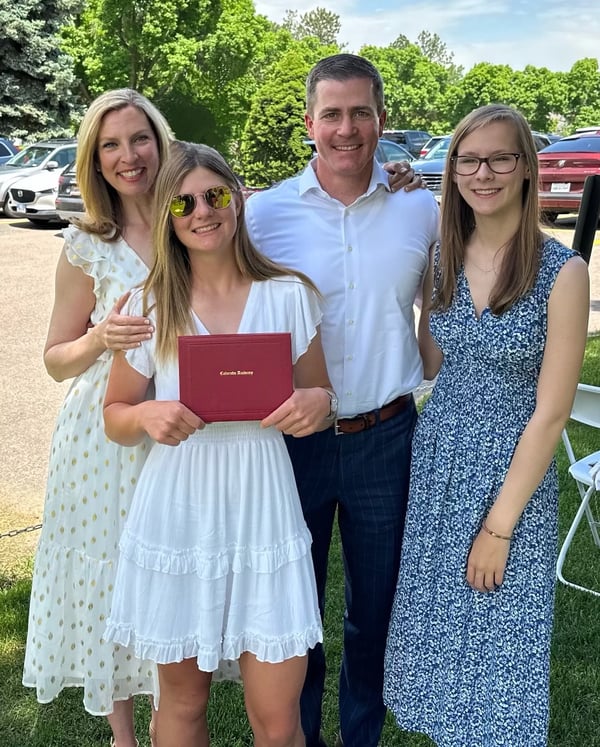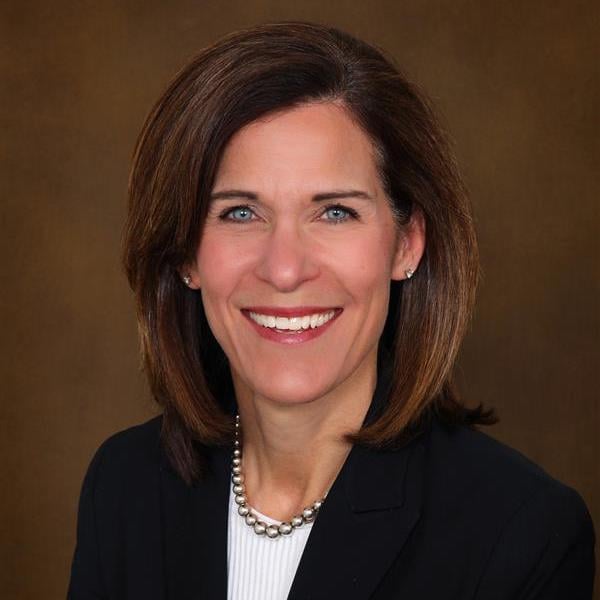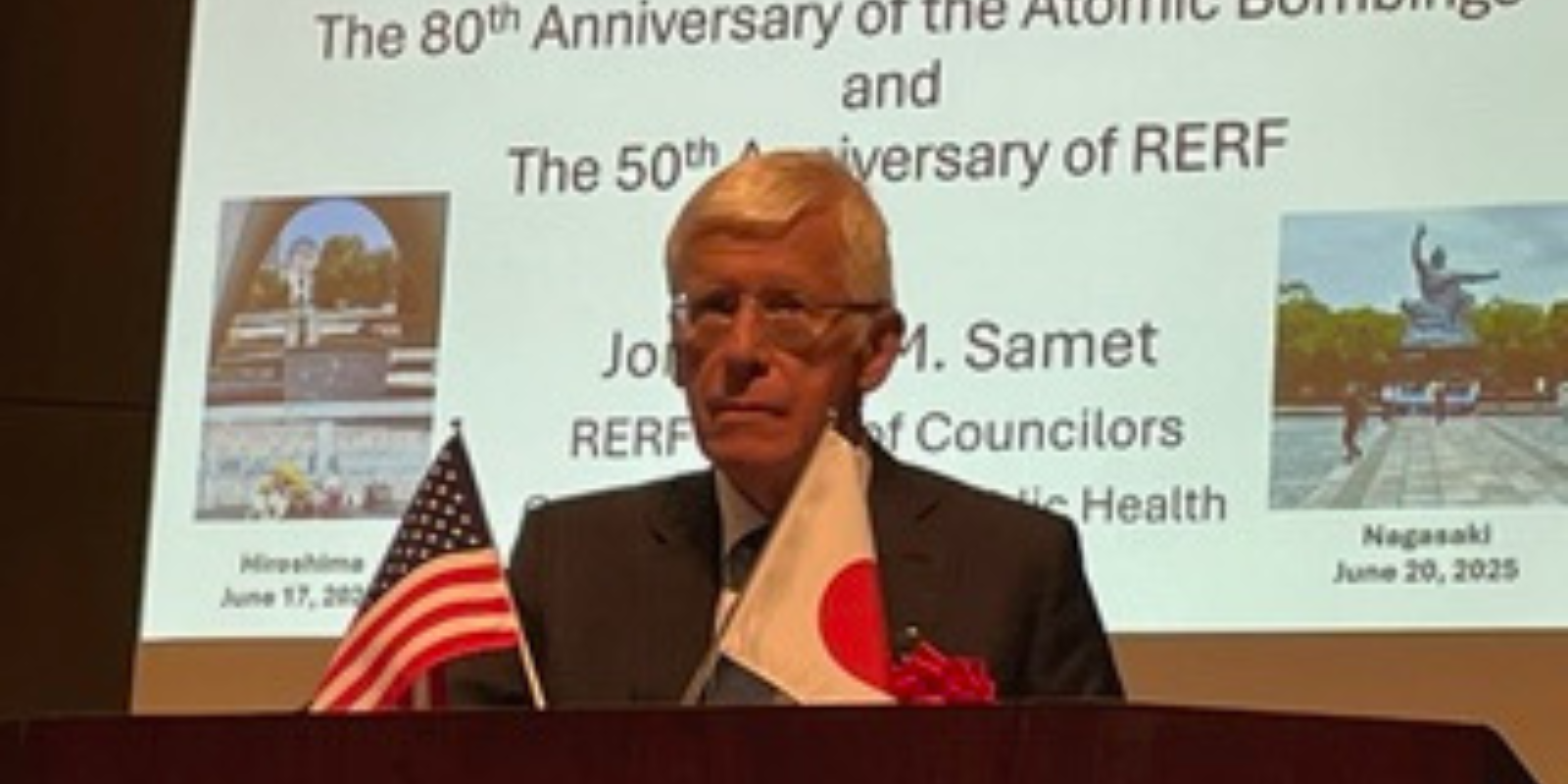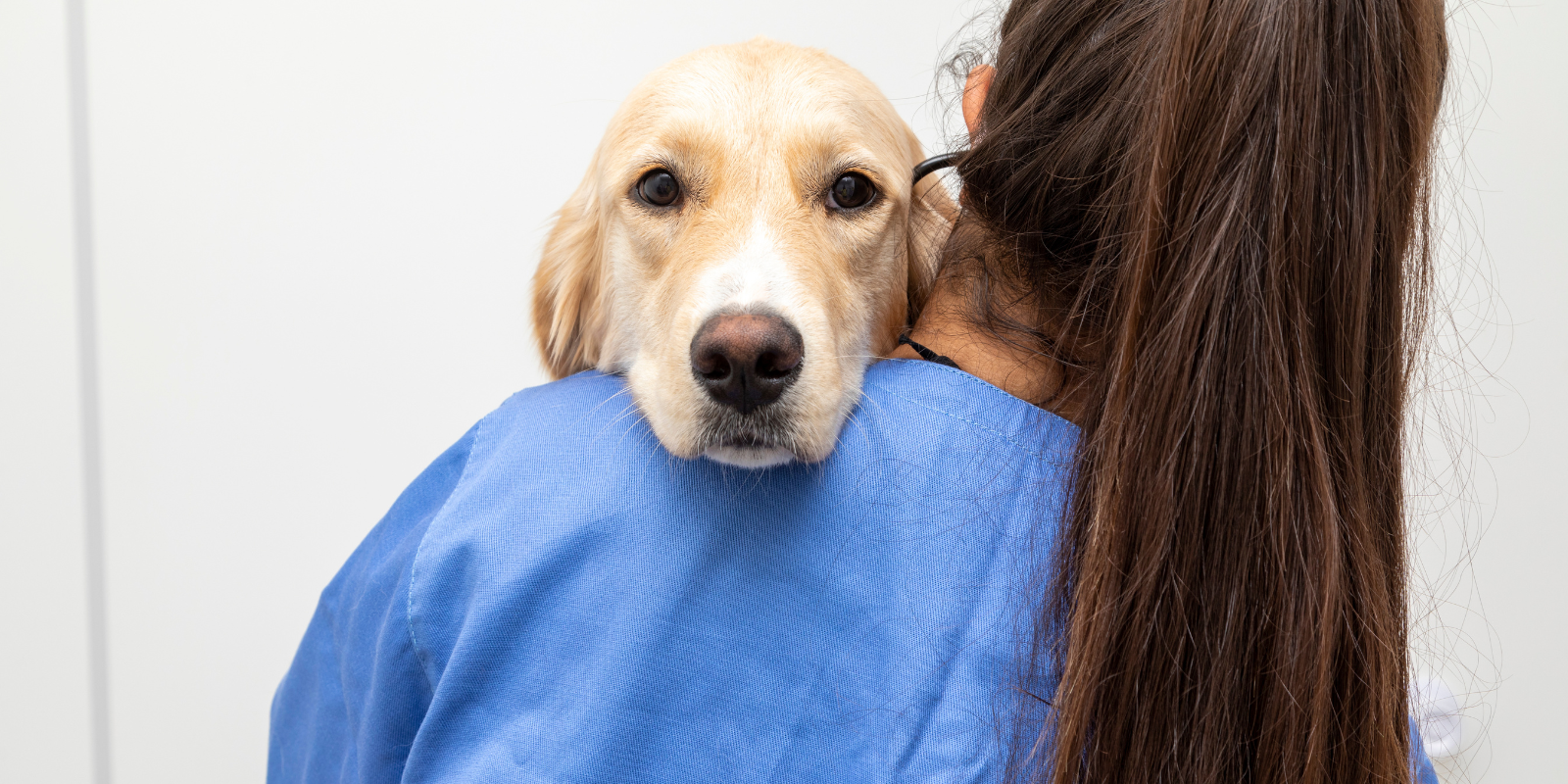At age 47, Wendy Johnson finally started jumping horses.
Though she had long been interested in the activity — watching her daughters take part in it on the competition field and at the family’s home in Conifer, Colorado — the thought of actually being the one on the back of the graceful beast, guiding it through midair and over a series of obstacles, had always scared her.
A struggle with breast cancer, however, changed her perspective completely.
“I never would have jumped horses if I had not gone through this journey,” she says. “The first day I woke up knowing I had to go to chemo? That’s the scariest word. You never want to have to do that. But now I compare how I felt then with any other thing I want to try that seems a little scary. You realize life is short.”
Wendy’s husband, Brandon, agrees, adding that his wife’s cancer experience transformed not just her, but their entire family.
“It's amazing what you learn about yourself in adversity,” he says. “You learn about your family and the team around you. It was sad and scary, and it made us angry, but it also gave us an opportunity to grow and to learn. Wendy watched our daughters jump horses for 10 years, and this year, she said, ‘You only live once; I'm going to start jumping horses.’ So she took some lessons, she started jumping, she enrolled in some shows this summer, and she ended up winning one of the shows.”
 Wendy and Brandon Johnson with their two daughters.
Wendy and Brandon Johnson with their two daughters.
A cancer is discovered
The road to that victory, however, is a long one. It began in September 2020, in the heart of the COVID-19 pandemic. Johnson and one of her daughters began working out together in an attempt to stay healthy in the midst of the crisis, and once Johnson lost a few pounds, she noticed a sizeable lump on one of her breasts during a self-breast exam. A biopsy revealed that the mass was cancerous, and Johnson soon found herself meeting with University of Colorado Cancer Center members Gretchen Ahrendt, MD, professor of surgical oncology, and Virginia Borges, MD, professor of medical oncology and the Robert F. and Patricia Young Connor Endowed Chair in Young Women’s Breast Cancer Research, to discuss her case.
“I had had a clear mammogram and ultrasound just eight months earlier,” Johnson says. “If I hadn’t have done that self-exam, this fast-growing cancer could have been fatal. If I can stress anything to other women, it is to do a self-exam on the first of every month. It literally saved my life.”
Ahrendt and Borges started Johnson on what ended up being 16 rounds of chemotherapy to kill as many cancer cells as possible prior to surgery. When Johnson finally had her surgery — a double mastectomy — she was in for another shock, as Ahrendt discovered microscopic cancer cells in two nearby lymph nodes during the procedure. To be safe, the surgeon removed 22 additional lymph nodes to make certain the cancer wouldn’t spread any further. It’s a process known as lymph node dissection.
“It was a horrible surprise,” Johnson says. “Brandon was in the waiting area for what we thought was going to be a three-hour surgery, but it turned out to be around six-and-a-half hours.”
Avoiding lymph node issues
Ahrendt says one reason for giving patients like Johnson chemotherapy prior to surgery is to eradicate cancer from the lymph nodes. It wasn’t entirely successful in Johnson’s case, but in many instances it means fewer lymph nodes need to be removed during surgery, reducing the risk of a condition called lymphedema, a buildup of lymph fluid in the body.
“A lot of our efforts in breast surgery are focused on ways to minimize the number of lymph nodes we take out,” Ahrendt says. “There's a lot of research focused on minimizing the number of women who need extensive lymph node surgery. If they get their chemotherapy, we bring them to surgery, and the lymph nodes still harbor cancer, the standard of care is to do a full lymph node dissection. There are a couple of national clinical trials that have been ongoing for several years that are trying to find out whether we can omit doing that full dissection when the nodes are still positive for cancer after chemotherapy.”
Period of reconstruction
A month of radiation therapy followed Johnson’s surgery, as did several months of breast reconstruction preparation using an empty breast implant that is slowly expanded in the chest tissue to make room for a full implant. If there was a bright spot in the whole journey, Johnson says, it was her plastic surgeon, David Mathes, MD, professor of plastic and reconstructive surgery in the CU School of Medicine, who performed her breast reconstruction surgery in April 2022.
“Dr. Mathes was absolutely fantastic. He was like, ‘Here's the shiny fun part — we can make whatever you want. Let's have a little happiness here,’” Johnson says. “He did an awesome job and gave me back my self-confidence.”
Factor in the follow-up visits, the bone density medication infusions Johnson had to take after her implant surgery, and another 14 rounds of HER2-positive tumor treatments, and her experience with breast cancer lasted nearly three years. Borges will monitor her for five more years, watching for signs that the cancer has returned, but she is hopeful that between the lymph node dissection and the double mastectomy, Johnson will live the rest of her life cancer free.
“I did every single thing they told me to do, and I had the best doctors and the best minds in the world helping me through this,” Johnson says. “So I don't worry about it. I live my life.”
Bringing a family closer together
The experience was trying for Wendy, Brandon, and their two daughters, now 16 and 18, but there were some silver linings, Wendy says.
“My daughters are teenagers, and it was devastating for them to hear their mom has something scary like this,” Johnson says. “But this whole experience brought us closer together as a family, and it brought us closer to God. Brandon never left my side for a second. He was there no matter what, at every single appointment I had. My parents drove to our home every week during my chemo treatments to be there for the girls after school. It was such a team effort.”
The experience also inspired the couple to make a donation to the CU Cancer Center, a gift that will help Ahrendt with her ongoing research into lymph node dissection and just how many nodes need to be removed to stop the spread of cancer.
“In Wendy’s case, they took out 22 lymph nodes because they found two that were cancerous,” Brandon says. “Is there a chance to do more research to find out if there’s a way they can stop before taking all 22 of those out? Maybe they take out four, and there's a rapid test that could identify whether or not they could stop. Taking all those lymph nodes out — you can't reverse that. There are things Wendy has to deal with for the rest of her life because they ended up having to take that many. We hope we can help Dr. Ahrendt and the people in her practice learn or improve things that can help the outcomes of others.”
Ahrendt, who has been researching the issue for more than a decade, says Johnson’s case spotlights the difficulty surgeons have in deciding whether or not to remove lymph nodes during surgery for breast cancer.
“Wendy and Brandon’s donation will help facilitate the opportunity to look at our institutional practice for how we manage women who still have cancer in their lymph nodes after they complete chemotherapy,” she says. “In our tumor boards, we will discuss patients who have a very limited volume of disease in their lymph nodes after chemotherapy and try to make a consensus decision that balances managing their cancer safely with maximizing their quality of life. Can we predict the women who are going to have very low-volume disease, where doing a full lymph node dissection is unlikely to benefit them in terms of treating their cancer?”
Gratitude and helping others
The Johnsons’ gift, Ahrendt says, will fund a resident who is helping with the research, as well as data collection and statistical analysis. She is grateful for the couple’s support.
“It really speaks to their generosity and altruism,” Ahrendt says. “Cancer is one of life's most challenging hurdles, and people react to it in many different ways. Some people turn inward; they don't really want to talk about it, they don't want to relive it. But in Wendy’s case, to take resources that she and her husband have and apply those toward making things better for other people is really generous. I admire their willingness to stay engaged and to be interested in advancing the field.”
For their part, Wendy and Brandon feel fortunate to have to the opportunity to help others in their situation who may not have the means to advocate for themselves or to fully explore all of the medical issues surrounding their cancer.
“We have a strong faith, and we believe that all of these resources are God's,” Wendy says. “We feel that we are temporary stewards of these resources, and part of our job is to help use them in a way that shows and shares His love with other people. This is a perfect opportunity for us to engage in that process in a way that's going to be meaningful for other people.
“To the extent that a moderate financial contribution can result in a better experience for other people, that’s an opportunity for us to engage in what we feel called to do. I am grateful every day for the incredible care I received and for the healthy, happy future ahead!”




.png)